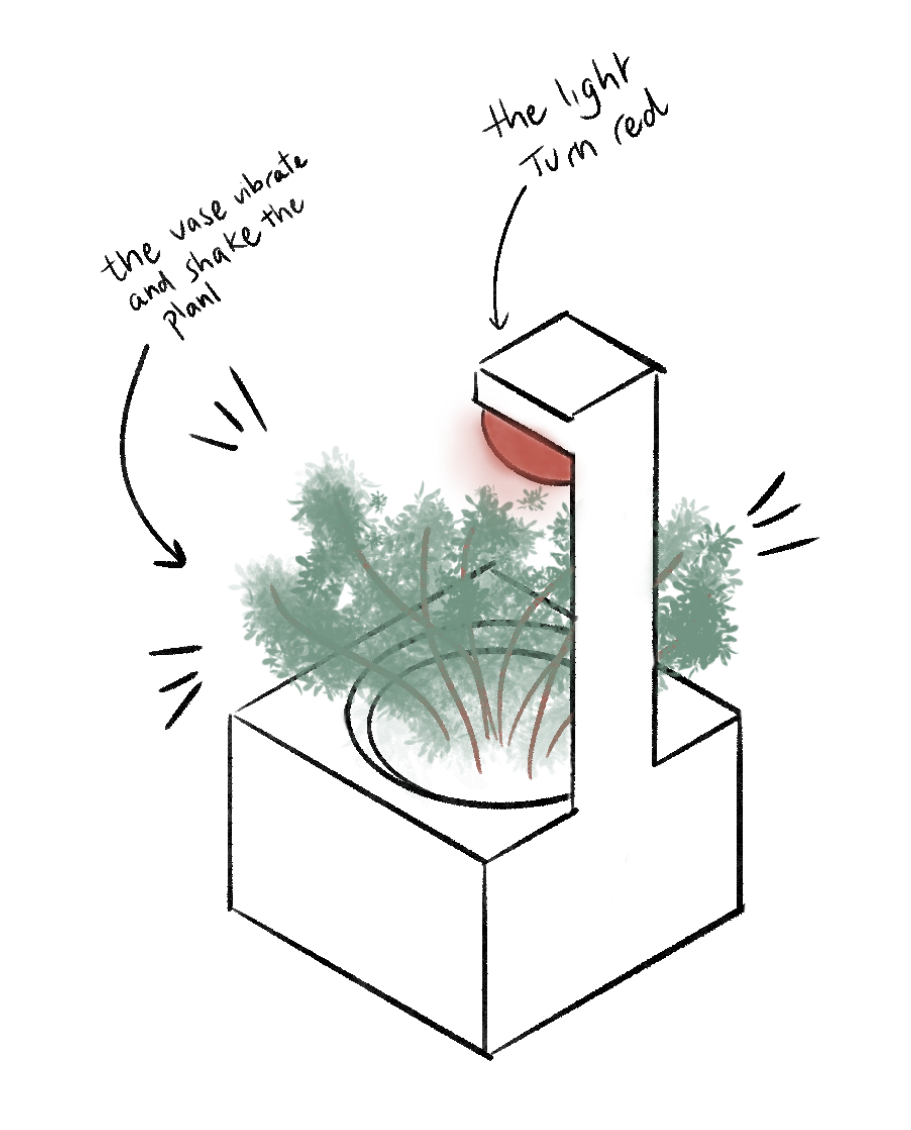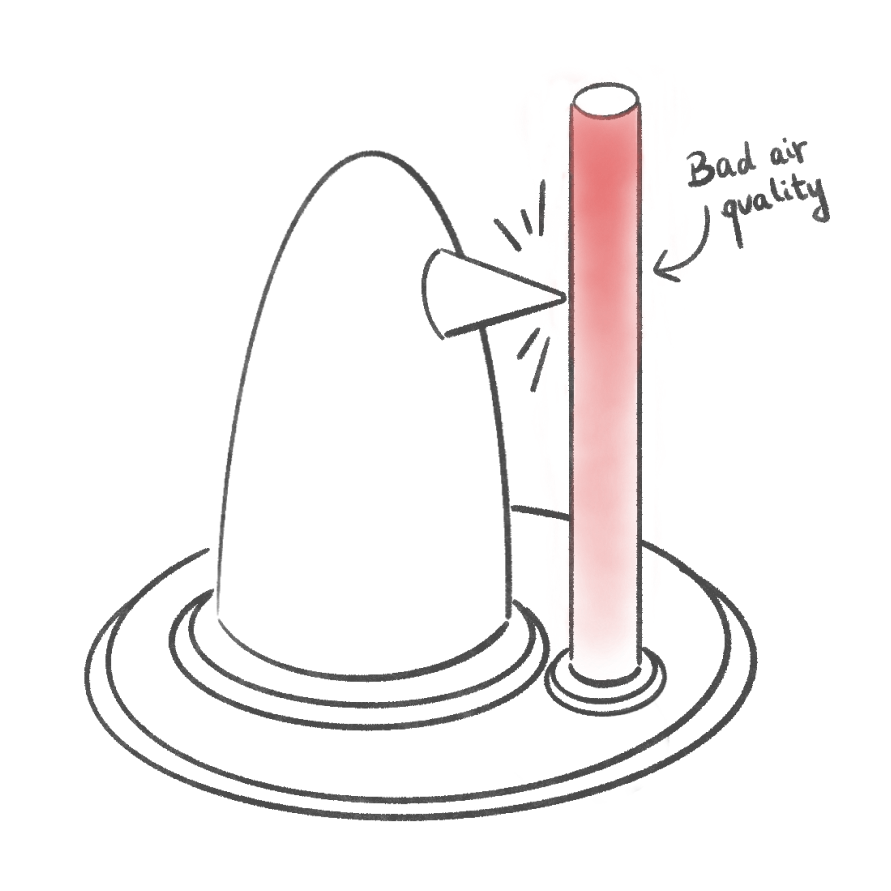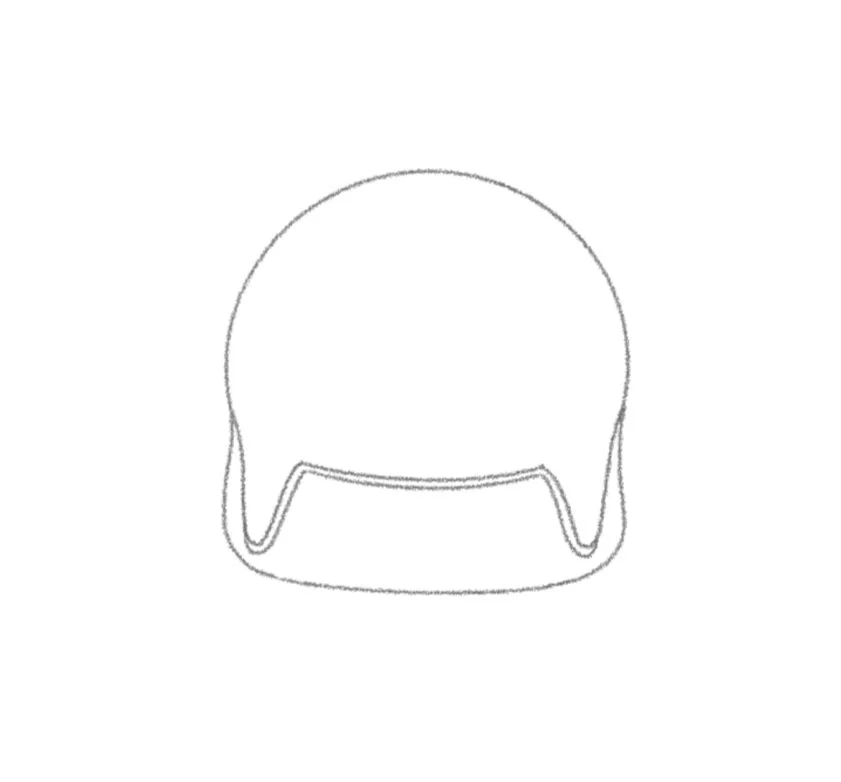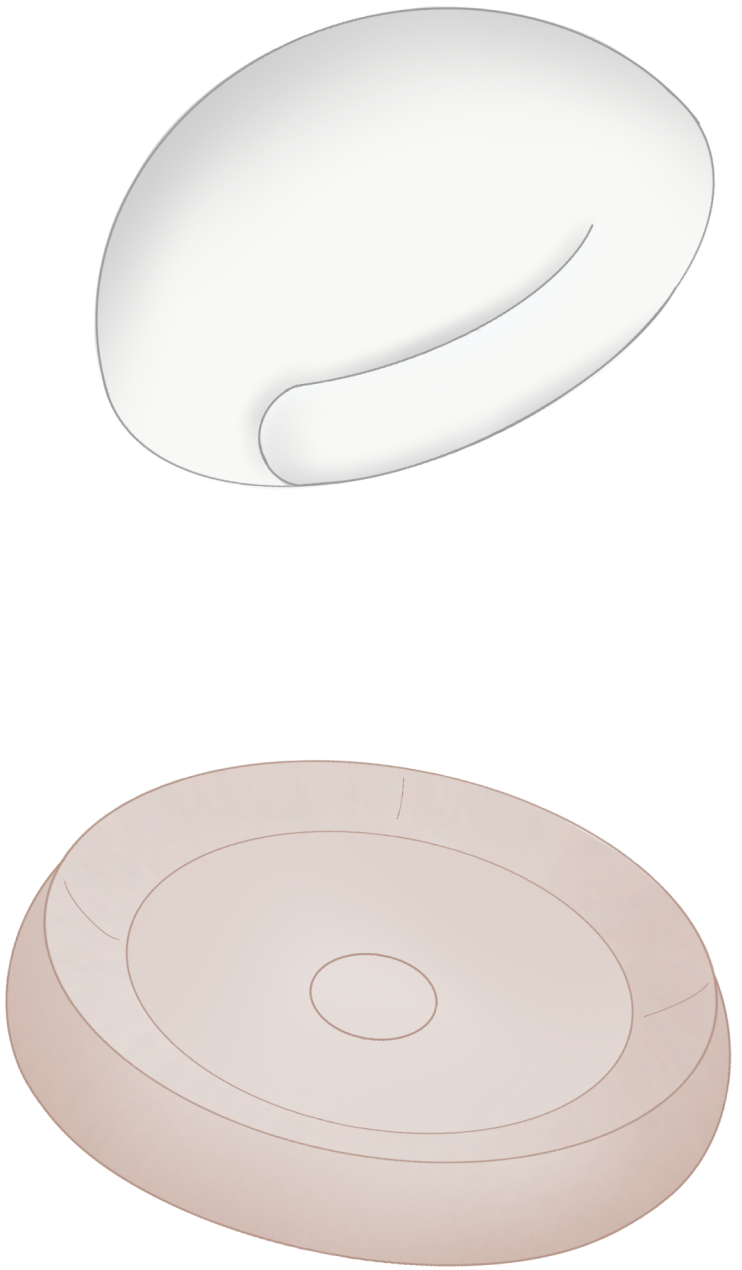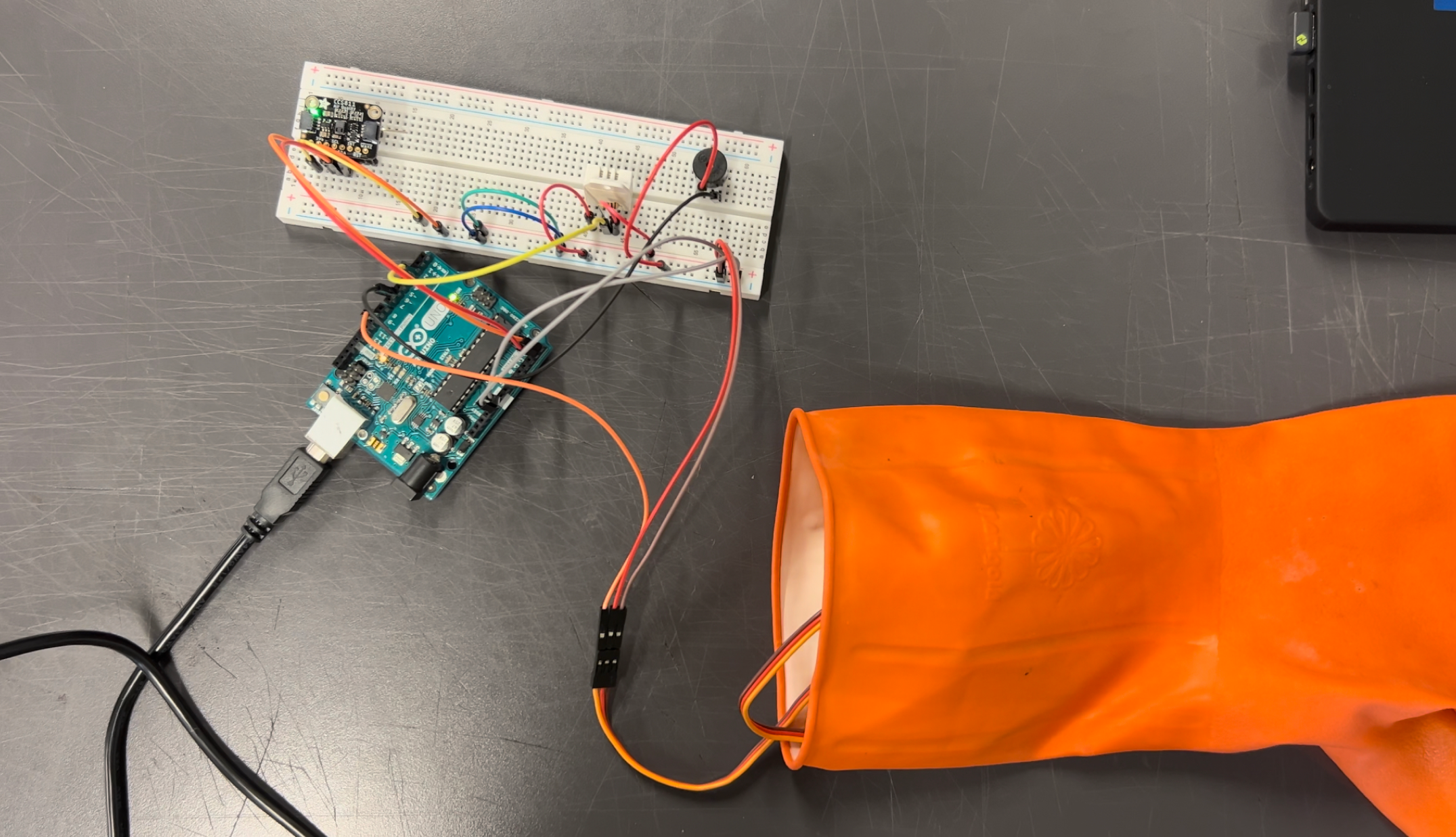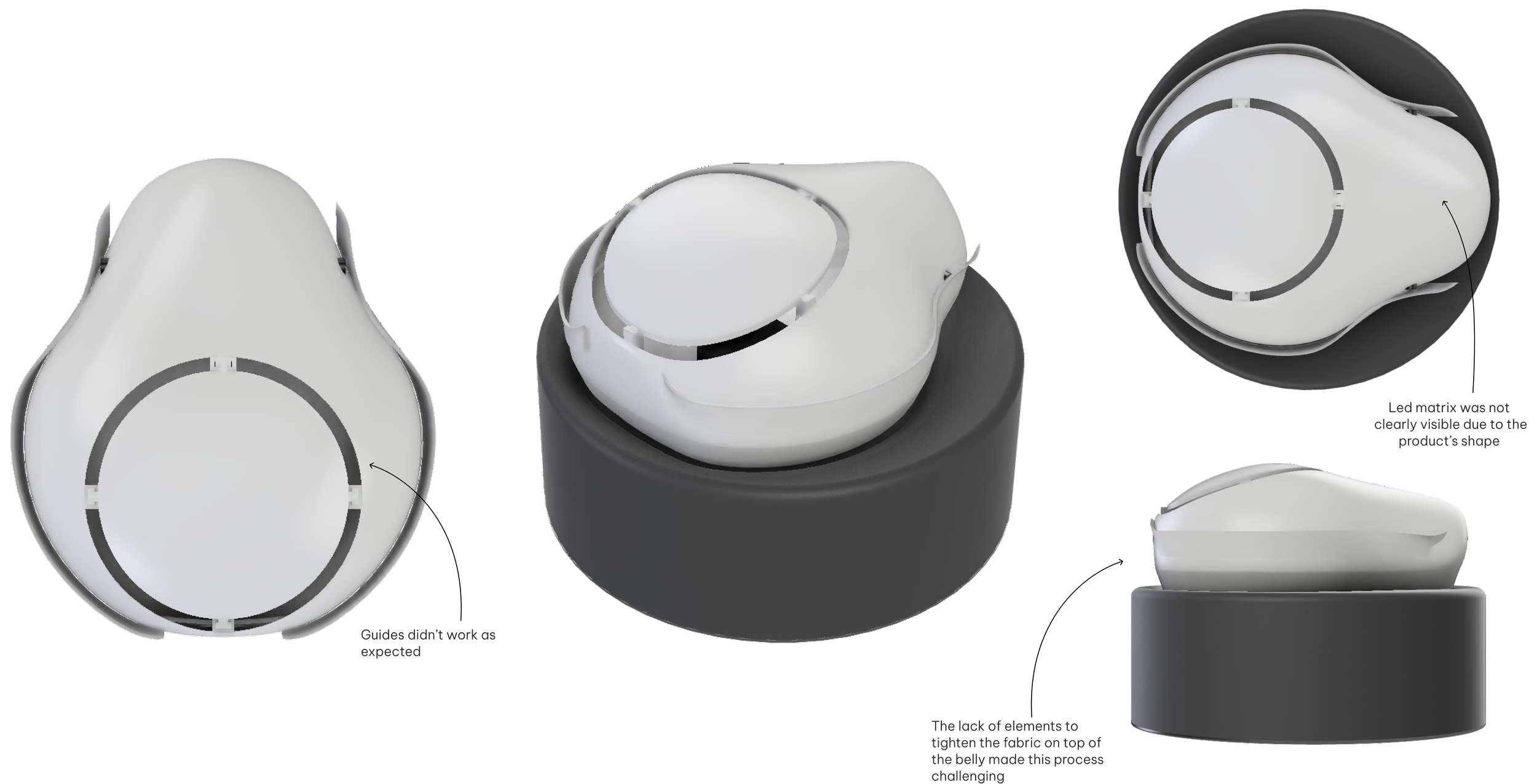
AirBuddy.
A physical product that allows the eco-visualisation of air quality in a room. With a humanised, anthropomorphic approach, the empathic relationship encourages users to take a break and enjoy fresh air.
The Concept
By 2030, reduce the adverse per capita environmental impact of cities, including by paying special attention to air quality and municipal and other waste management.By 2030, ensure that people everywhere have the relevant information and awareness for sustainable development and lifestyles in harmony with nature.Air quality issues affect the lives of millions all over the world. Although many studies and public attention have been going towards outdoor air quality, according to the EPA, indoor air pollutants are often 2 to 5 times higher than outdoor. In other words, sometimes the air inside can be more harmful than outside. There should be more awareness of this issue, and we aim to make the silent killer visible through the project.In developing the concept, we researched products related to air quality and behavioural change, then utilised the diagram to position them according to the level of closeness and biomorphism.
Most of the products were found to belong to the ‘low biomorphism’ area, so we decided to explore more the ‘high biomorphism’ and ‘high closeness’ areas as we believe that this type of product can build a bond with the user and to promote a behavioural change.Scenarios of Usage
Sketches
STAGE ONEWe brainstormed different forms of interaction and made sketches based on each, and then we identified the second mode of interaction as the proposed concept.STAGE TWOExtending from the proposed mode of interaction, we further refined the model with the focus on making the product more empathetic and approachable for users. First Iteration
Our first iteration of the concept consisted of a two-part-rounded object comprised of a base and a top device. As displayed in the following storyboard, the device includes arms that can be attached to the window and used as a window blocker to let fresh air flow inside the indoor environment.STORYBOARDINTERACTION MATRIXWe used the man-machine interaction matrix to frame the interaction between the user and the product, defining the senses and the actions involved, the media and the devices applied. Second Iteration
The first iteration of the shape and some elements of the feedback and feedforward did not fully satisfy us for the following reasons:Lack of anthropomorphism: the form could achieve a higher level of resemblance with the natural world to reach the desired empathic link.Did not highlight the breathing: The breathing is a substantial element for the product’s feedback, but it’s somewhat hidden due to the lack of a shape that can call attention to that element.Additional anthropomorphic feedback: explore alongside the breathing other channels to communicate to the user the air quality status
Sketches
FORMMECHANISMCODINGFirst Prototype
The coding is an essential element that allowed us to test different effects and feedback. The C++ language to control the Arduino board and the sensors and actuators attached to it was very relevant in our prototype. This tool allowed us to experiment with different breathing patterns, rhythms and LED faces. In the second image, you can see that to find the right breathing states of the device, we tested different times of pauses to reach a satisfactory final result.PRELIMINARY TESTINGTo understand more about the breathing states, we simulated them using a rubber glove. Different servo motors and multiple attachments were inserted inside the glove to understand which effect could resemble the breathing patterns.EMOTIONS3D MODELSecond Prototype
3D MODELITERATIONFinal Prototype
After a testing session, we decided to make some changes to the prototype based on test results and user suggestions.
We made the following changes:On the back, we added a component that serves to attach AirBuddy to the window;The arms can be used to carry Airbuddy around the domestic environment but are no longer used to attach it to the window;The shape of the head is more rounded, so the product looks more anthropomorphic;The sound has been removed due to the lack of interest shown by the users during the testing phase. Lots complained that sound is unnecessary since many appliances around the house produce noise, which can overwhelm users.
3D MODELRENDERSTORYBOARD






